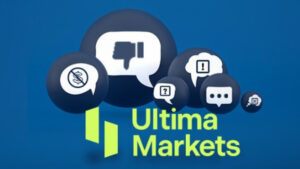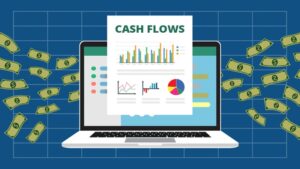Making business decisions on intuition alone is like steering a ship through a storm without a compass. The risks are huge—from launching unwanted products to wasting budgets on the wrong channels.
This guide is your compass. We’ll break down key market research methods, explain the differences between primary, secondary, qualitative, and quantitative approaches, and help you choose the right strategy. By the end, you’ll be ready to replace uncertainty with data-driven confidence.

What is Market Research? A Foundation for Success
Defining Market Research in Simple Terms
Market research is the systematic process of gathering, analysing, and interpreting information about a target market, consumers, competitors, and the industry as a whole. It’s not about finding data that supports your existing beliefs; it’s about uncovering objective truths that guide your decisions.
Think of it as the intelligence-gathering arm of your business, providing the facts needed to build a robust strategy and navigate the competitive landscape effectively.
Why Market Research is Non-Negotiable for Any Business
In today’s fast-moving market, skipping research is a risk few businesses can take. It underpins nearly every decision. Here’s why:
- Minimise Risk: Research helps avoid costly mistakes—like wrong pricing, mis-targeting, or launching features nobody wants—by validating ideas before big investments.
- Spot Opportunities: Markets change fast. Research uncovers trends, underserved niches, and new segments, letting you innovate and lead instead of playing catch-up.
- Know Your Customers: Success comes from solving real problems. Research reveals customer motivations, frustrations, and needs, giving you the empathy to create products that truly resonate.
- Enable Data-Driven Decisions: From marketing copy to pricing and product features, research provides the data to guide choices—so strategies reflect what customers want, not assumptions.
The First Layer: Primary vs. Secondary Research Methods

Primary Research: Gathering First-Hand Data
Market research methods examples include conducting your own customer surveys, running focus groups, or performing one-on-one interviews.
- Pros: The data is highly specific to your research questions and proprietary to your organisation. You have full control over the methodology and can ensure high quality.
- Cons: It can be significantly more expensive ($) and time-consuming to plan, execute, and analyse compared to secondary research.
Secondary Research: Leveraging Existing Data
Secondary research, also known as desk research, involves using data that has already been collected and published by others. This includes information from sources like government agencies (e.g., Office for National Statistics), industry reports, academic journals, and public company financial statements.
- Pros: It is generally much more cost-effective (sometimes free) and quicker to access, providing a broad overview of a market or trend almost instantly.
- Cons: The data may not be specific enough for your needs, could be outdated, or the methodology used to collect it may not be transparent or robust.
Quick Comparison Table: Primary vs. Secondary Research
| Feature | Primary Research | Secondary Research |
| Data Source | Collected directly by you or your organisation | Collected and published by third parties |
| Specificity | High (tailored to your exact questions) | Low to Medium (general market data) |
| Cost | High ($$$) | Low to Free ($) |
| Time | Time-consuming | Quick to access |
| Example | Your company’s own customer satisfaction survey | A published industry report on market size |
The Core Approaches: Quantitative Market Research Methods
Within both primary and secondary research, data can be further classified as quantitative. Quantitative research is all about numbers. It focuses on collecting numerical data that can be statistically analysed to identify patterns, make predictions, and generalise findings to a larger population. It answers questions like “How many?”, “How much?”, and “What is the percentage?”.
Surveys and Questionnaires
Surveys are arguably the most common quantitative research method. They involve asking a structured set of questions to a large sample of people. The data collected is typically closed-ended (e.g., multiple-choice, rating scales), making it easy to tabulate and analyse statistically. They are incredibly versatile and can be distributed through various channels such as email, social media, or embedded on a website. A well-designed survey can efficiently measure customer satisfaction, gauge brand awareness, or test concepts for a new product.
Experimental Research
Experimental research is used to determine cause-and-effect relationships by manipulating one or more variables while keeping others constant. The classic example in digital marketing is A/B testing. For instance, an e-commerce company might show two versions of a product page to different sets of visitors—one with a green ‘Buy Now’ button (A) and another with a red one (B). By measuring the conversion rate for each version, the company can quantitatively determine which colour causes more clicks, providing a clear, actionable insight.
Correlational Research
This method examines the statistical relationship between two or more variables to see if they move in relation to each other. Unlike experimental research, it does not determine cause and effect. For example, a business might analyse its sales data and find a positive correlation between increased advertising spend ($) and higher sales revenue ($). While this suggests a relationship, it doesn’t prove that the ad spend caused the sales increase; another factor, like a seasonal trend, could be influencing both variables.

Uncovering the “Why”: Qualitative Market Research Methods
In-Depth Interviews
In-depth interviews are structured or semi-structured one-on-one conversations with participants from your target audience. The goal is to explore topics in rich detail, allowing the interviewer to ask follow-up questions and probe deeper into the participant’s responses. This method is excellent for understanding complex decision-making processes, gathering detailed feedback on a product prototype, or exploring sensitive topics that people might not be comfortable discussing in a group.
Focus Groups
A focus group brings together a small, diverse group of participants (typically 6-10 people) to discuss a specific topic under the guidance of a trained moderator. The moderator’s role is to facilitate conversation and ensure all participants have a chance to share their views. The real value of focus groups lies in observing the group dynamics—how participants interact, build on each other’s ideas, and influence one another. This makes them ideal for brainstorming, testing new concepts, and understanding group attitudes.
Observational Research
Sometimes, the best way to understand behaviour is to watch it as it happens. Observational research involves watching how consumers behave in a natural or controlled setting without directly interacting with them. A classic example is a retailer observing how shoppers navigate their store, which products they pick up first, and where they spend the most time. This method can reveal unspoken needs and usability issues that customers might not think to mention in a survey or interview.
Case Study Research
A case study is an in-depth analysis of a specific person, group, organisation, or event within its real-life context. For businesses, it could mean tracing the journey of a loyal customer to uncover what drove their satisfaction and advocacy. This method provides a rich narrative that helps refine marketing, product development, and customer service strategies.
How to Choose the Right Market Research Method
Step 1: Clearly Define Your Business Goal and Research Questions
Start with the ‘why’. What specific business decision are you trying to make? What do you need to know to make that decision with confidence? Are you trying to understand market size (quantitative), or are you trying to understand customer motivations (qualitative)? Your research questions will directly point towards the most appropriate method. For example, a question like “What percentage of our target market is aware of our brand?” clearly calls for a quantitative survey.
Step 2: Assess Your Budget, Timeline, and Resources
Be realistic about your constraints. Primary research methods like focus groups and in-depth interviews require a significant investment in time and money ($$$). In contrast, secondary research or simple online surveys can be conducted quickly and on a tight budget ($). If you have a small team, a complex experimental study might be out of reach, but a series of customer interviews could be perfectly feasible. Your resources will narrow down your viable options.
Step 3: Understand the Type of Data You Need (Numerical vs. Descriptive)
This is the core distinction between quantitative and qualitative research. If you need statistically significant data to back up a major investment decision or to track key performance indicators over time, you need quantitative research. If you are in the early stages of product development and need to explore user needs, generate ideas, or understand the ‘why’ behind a specific behaviour, qualitative research will provide the rich, descriptive insights you need.
Step 4: Consider a Mixed-Methods Approach for Comprehensive Insights
Often, the most powerful insights come from combining different market research methods. A mixed-methods approach leverages the strengths of both qualitative and quantitative research. For example, you could start with qualitative interviews to explore customer problems and form a hypothesis. Then, you could use a quantitative survey distributed to a large audience to validate that hypothesis and measure its prevalence. This combination provides both the depth of understanding and the statistical confidence needed for major strategic decisions.
The Role of Financial Brokers in Market Research Method
How Market Data Influences Trading Decisions
In finance, market research takes the form of market analysis. Traders analyse historical price data, economic indicators, and news events to forecast future price movements. This is a clear application of secondary research. Fundamental analysis involves examining economic data and company financials (secondary, quantitative research), while technical analysis involves studying price charts and patterns (secondary, quantitative research) to identify opportunities.
Using Ultima Markets’ Tools for Market Research Method
Platforms like Ultima Markets provide traders with a suite of tools that function as a powerful secondary research hub. Traders using the Ultima Markets MT5 platform can access advanced charting tools, dozens of technical indicators, and economic calendars. These resources allow them to analyse vast amounts of historical market data to identify trends and inform their trading strategies. Furthermore, educational materials offered by the broker help users interpret this complex data effectively. This ecosystem of data and analysis tools is crucial for any modern trader. Ensuring the security of your capital through strong fund safety measures and reading reliable Ultima Markets Reviews are also part of the research process when selecting a broker, alongside understanding practicalities like their Deposits & Withdrawals processes.

Conclusion
Market research is not an optional extra; it is the cornerstone of intelligent, sustainable business growth. It illuminates the path forward, transforming risky guesses into informed strategies. We have seen that the choice between primary and secondary, or qualitative and quantitative, is not about which is ‘better’, but which is right for your specific goals, timeline, and budget.
By clearly defining your objectives and understanding the strengths of each approach, you can select the most effective market research method for the job. Ultimately, a well-chosen and executed market research method is a powerful investment—one that pays dividends by mitigating risk, delighting customers, and uncovering the growth opportunities that will define your future success. The first step is simple: identify your most pressing business question and let the data guide you to the answer.
FAQ
What are the 5 main market research methods?
The five core methods are Surveys (quantitative), Interviews (qualitative), Focus Groups (qualitative), Observation (qualitative), and Secondary Data Analysis (both).
What is the most popular method of market research?
Surveys, due to their versatility, scalability, and cost-effectiveness.
What is the main difference between qualitative and quantitative research?
Quantitative answers “what/how many/who” with numbers; qualitative answers “why” with meanings and context.
How much should I budget for market research?
Costs range from free (DIY/secondary data) to tens of thousands for large projects. Small businesses often spend $1,000–$10,000.
What are some modern market research methods?
Social Media Listening, AI text analysis, and online analytics (e.g., Google Analytics).




